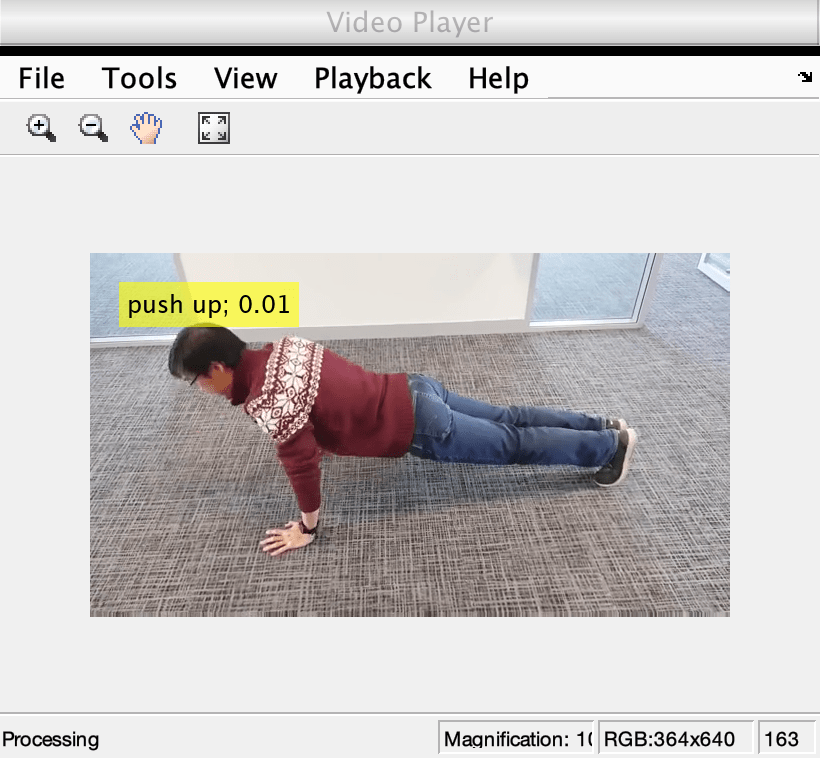classifySequence
Syntax
Description
label = classifySequence(i3d)i3d. The function returns label, a scalar
categorical that specifies the classification of the video or optical flow sequence.
label is one of the values of the Classes property
of the video classifier object.
[___] = classifySequence(
specifies the hardware resources for running the classifier in addition to any combination
of arguments from previous syntaxes, as one of these options:i3d,ExecutionEnvironment=env)
"auto"— Sets the execution environment to the GPU, if available. Otherwise the function sets it to the CPU."gpu"— Sets the execution environment to the GPU. Usage of the GPU requires Parallel Computing Toolbox™ and a CUDA® enabled NVIDIA® GPU. For information about the supported compute capabilities, see GPU Computing Requirements (Parallel Computing Toolbox)."cpu"— Sets the execution environment to the CPU.
Examples
Input Arguments
Output Arguments
Version History
Introduced in R2021b
See Also
Functions
sceneTimeRanges|writeVideoScenes|classifyVideoFile|resetSequence|updateSequence|predict|forward
